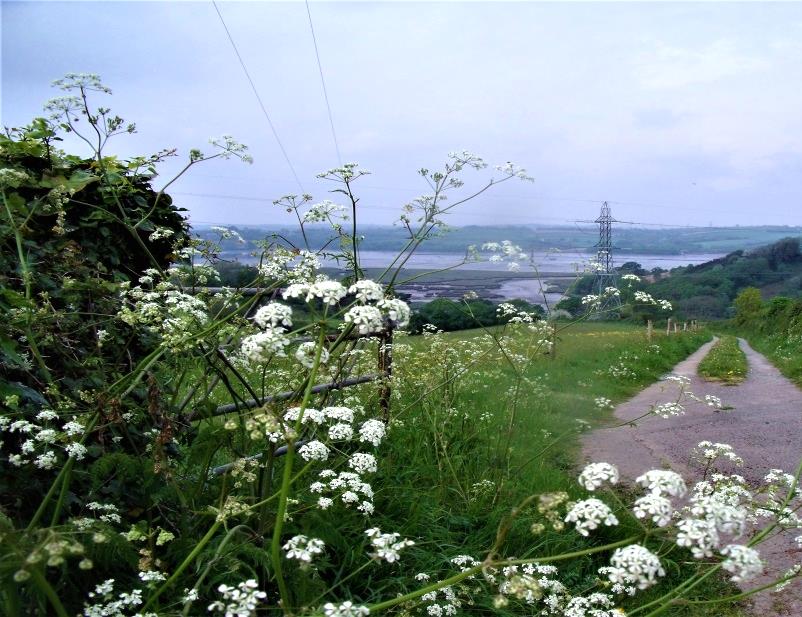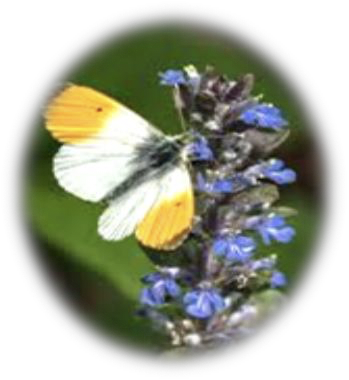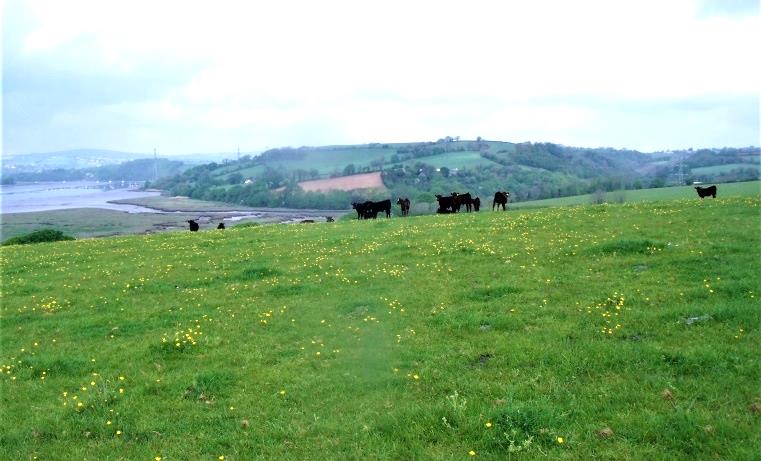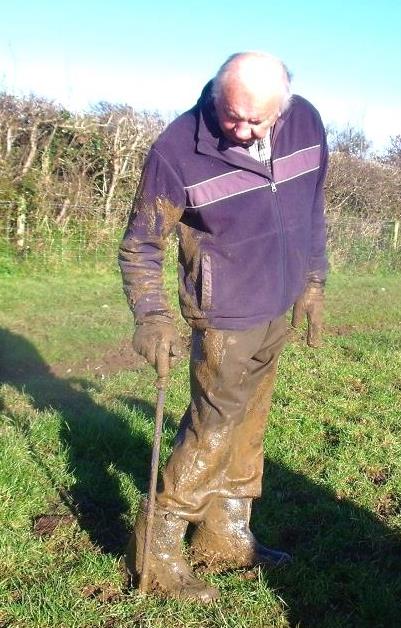Today is Wednesday 1st May or May Day and is celebrated in many different ways throughout the world so before recounting how our walk turned out, I will just describe how here in Britain some people still dance around a maypole that is draped in ribbons which are then woven into complex patterns by the dancers just as they did in pagan times…. This British tradition of dancing around a pole is around 600 years old and historians believe it was part of a Germanic pagan fertility that reached our shores courtesy of invading forces. Originally some of the ‘poles’ were in fact entire tree trunks that had been felled and dragged to the traditional site with great ceremony. The whole tree would then be decked with floral adornments and the pole (nature) would serve as the central focus for the ensuing celebrations aimed at connecting all people with nature via the ‘ribbons. Although I can think of only two people in our group who may be able to skip around a maypole for any length of time without collapsing in a heap on the ground, today twenty two of us were doing what almost anyone can do… connecting with nature by walking in the countryside.
Along the quiet lanes of Bere Ferrers we passed many pretty flowers growing in the hedges but Juliette, this week’s walk leader paused only briefly when we reached the entrance to a field on our left with salt marshes edging the river in the distance.

Soon we joined the Discovery Trail via a wooden bridge topped with wire netting to make it anti-slip with similar boardwalks further on atop the marshy ground as we neared Liphill Quay. A number of fields followed all connected by stiles with some of these enclosures containing just Buttercups while others were full of wildflowers. Sometimes we found ourselves sandwiched between an electric fence and a high hedge which contained flowering Hawthorns and Holly still bearing a few berries plus a number of young Beech trees with Alkanet flowering at their feet. Although the sun was rather hazy I recognised some small copper-coloured butterflies, some small white butterflies and even more male Orange-tip butterflies as they flitted from flower to flower in the meadows (the tip of the wings of females of this species are actually black in colour).The butterfly pictured is perched on a Bugle plant which grew at the edge of one of the meadows.

Juliette had reccied this walk recently and had already made the decision not to venture to Thorn Point so we just sprawled on the ground in the corner of this field to enjoy a short break before scaling the main hill of the day. By this time the weather had turned quite humid and as we looked about us it was clear to see that many of us had already removed some of our clothing.
This particular field is infamous for a number of reasons to do with the herd of dark reddish-brown cattle which graze here; today they were first spotted on the brow of the hill and one calf stood rooted to the spot watching us approach. Many of us had our eyes on the ground though as we dodged their cow-pats causing brown dung flies to take off in all directions. Apparently the average dairy cow dumps 15 tons of the stuff a year and when this is moist it swiftly become a complex insect colony, some flies deposit live larvae while others lay eggs which thriveso long as they hit the cowpat while it’s wet.

Part way up the hill we turned our back on the herd to
pause one last time to admire the view across the River Tamar towards Cargreen. I was fortunate to witness a medium-sized brown bird taking off from the ground which I was able to identify as a Skylark by the crest on top of its head. These particular birds make a hollow on the ground lined with leaves and grass at the edge of farmland but apparently Skylarks make several attempts at nest-building each year in the same area so it is sure to be back. I don’t believe anyone else saw it and as I scoured the terrain I could see no nest nearby so I didn’t even mention it.
Continuing onwards towards the very top of the hill, the cows led their calves away this time so we were able to leave this field towards the end of the walk without incident. Here beside the gate is a favourite spot for these animals to stand but thankfully the ground was dry today; many of us know what a quagmire it can become after heavy rain and here to prove my point is a photo taken in 2017 when Ray had just freed himself from the squelchy mud.
